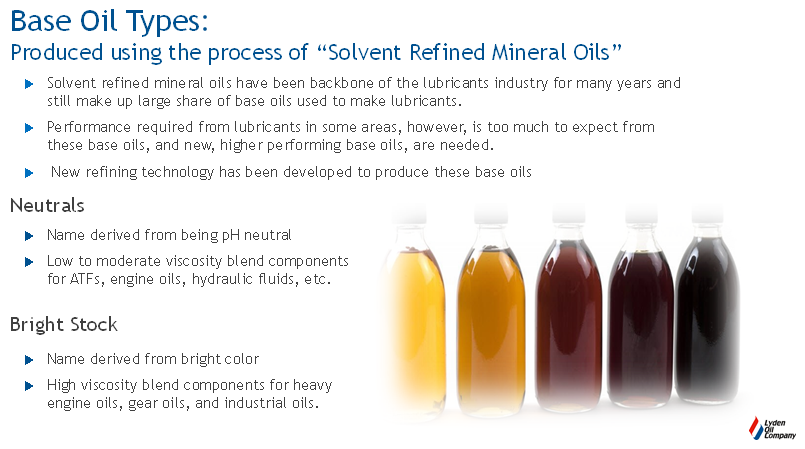Friday, November 3, 2017 3:21:11 PM
Base Oil Types
- General
- School Home
- MOM's Oil Change Checklist
- Oil Sampling
- Organic Theory
- Crude Oil Basics
- Crude Oil Refining
- Fractional Distillation
- Vacuum Distillation
- Hydrocracking
- Crude Oil Regions
- Paraffinic Crude VS Naphthenic Crude
- Crude Oil Classification
- Crude Oil: Paraffinic, Naphthenic, or Mixed Base?
- Saturated and Unsaturated Molecules
- API Base Oil Categories
- Base Oil Groups
- Base Oil Types
- API Service Classifications
- Nine Common Additives
- Seven Common Places for Additives
- The Difference Between Synthetic and Conventional Motor Oil
- Advantages and Disadvantages of Commonly Used Synthetic Base Oils
- Three Main Types of Fluid Lubricants
- Viscosity
- SAE Viscosity Grades for PCMO
- Functions of Engine Oils
- Stages of Lubrication
- Five Main Functions of Lubricants
- Inspection Tests
- Journal Bearing Characteristics
- HDEO: Important Engine Oil Properties
- Diesel Emissions
- Diesel Fuel
- Four Diesel Combustion Characteristics
- Hot Smoke VS Cold Smoke
- Diesel Fuel Ignition Quality
- Advantages/Disadvantages of Diesel Engines VS Gasoline Engines
- HDEO API Service Categories
- Refrigeration Methods
- Grease Components
- Advantages/Disadvantages of Grease over Oil
- Evaluating Grease Quality and Performance
- Grease Review
- Gear Oil Components
- Gear Types and Additives
- Gear Oil Classifications
- AGMA Grades
- Lubricating Enclosed Gears
- Gear Oil Review
- How to Minimize Effects of Severe Service Conditions of Enclosed Gear Lubricants
- ATF Basics
- ATF Dyes Red & Green
- Hydraulic Fluids
- Metal Fluids
- Three Types of Metalworking Lubricants
- Product Application Manual
Did you know:
Base Oil Types are produced by the process of "Solvent Refined Mineral Oils"
#LydenOilSchool #Oil
